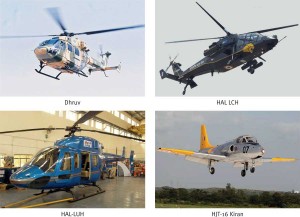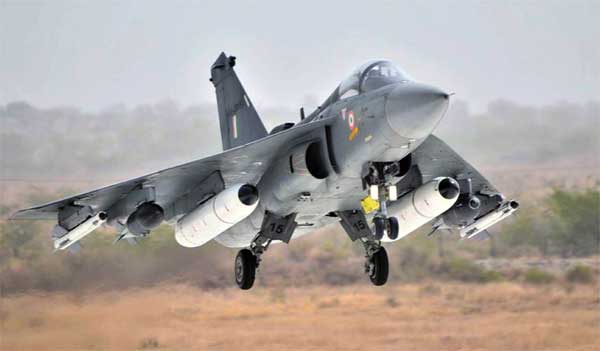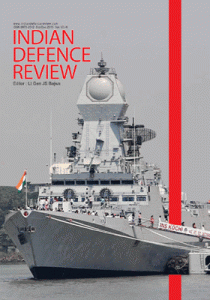The outcome of the next war is going to be determined less by the IAF’s deep strike or air combat capability, more by its ability to support own troops in mountainous terrain. No matter what targets the PLAAF manages to bomb deep in India, troop positions on the ground will decide whether the war ends in victory or defeat. If our troops are poised to enter Tibet, the war will end on our terms. What the IAF would need to do is dominate the air space over the mountains and unleash its Close Air Support (CAS) power.
HAL, as it exists today, is neither as incompetent, nor as mismanaged as is widely believed…
The major military powers of the world – USA, Russia, France and China – meet their weapon systems requirements largely through domestic production. India, which aspires to be a great power, imports nearly 70 per cent of its weapons. Even worse, the country has struggled for around 50 years and has spent crores of rupees to enhance its defence production capability without much progress. The reasons for India’s failure to reduce its dependence on imports have been well debated in the media. However, some facets of the problem may have been completely overlooked.
The Usual Suspects
Anyone who has closely followed the debate on defence production is likely to be familiar with the following explanations for our poor showing. We haven’t built an industrial base to support our defence production,” say analysts. “Each time we want to build a weapons system we have to start from scratch,” bemoan officials of the Defence Research and Development Organisation (DRDO). “The problem lies in the incompetence of Hindustan Aeronautics Limited (HAL) and the DRDO,” says the military staff. Blame game at its worst!
Industrial Base for Defence Production
We have been building fighter aircraft in India since the 1960s – Ajeet, Marut, MiG-21, Jaguar, Su-30MKI, Hawk and the Light Combat Aircraft (LCA). So how can anyone say we don’t have an adequate industrial base? Didn’t we create an industrial base during the 50-year long saga of licenced production? Over the years, HAL and DRDO have acquired the infrastructure and Intellectual Property (IP) to build contemporary weapon systems as a result of very expensive Transfer of Technology (ToT) agreements. Why can we not use the IP and infrastructure to design and develop our own weapons?
The IAF has consistently striven to accommodate HAL and DRDO capabilities in its procurement plans…
Analysts attribute the failure to poor management and laid back work culture typical of the public sector. The explanation has a ring of truth, but only half the truth. Take the case of the Indian Air Force (IAF). Its weapon procurement policies are as much to blame for the impasse in domestic airborne weapons system production as the laid back work culture at HAL and DRDO. The fact that DRDO has had more success developing sensors and weapons systems for the Navy is a pointer. The Navy helps DRDO gain strength in technological domains relevant to its most urgent needs – Heavyweight Torpedoes and Maritime Surveillance Radars – and places orders when DRDO developed systems come good.
The IAF does not help HAL build strengths – one could even say the IAF does not allow the HAL to build strengths! Because the IAF follows a procurement policy that is largely obsolescence-driven – aimed at replacing strike, air defence, air lift and reconnaissance assets due to be phased out with similar state-of-the-art equipment of similar nature. It is often alluded to in the media that the IAF is averse to procuring aircraft from HAL. This is not true. The IAF has consistently striven to accommodate HAL and DRDO capabilities in its procurement plans – LCA, HPT-32, the Intermediate Jet Trainer (IJT) are some examples – only to have its procurement plans derailed by interminable delays and massive performance shortfalls. From the IAF’s point of view, accommodating delays and shortfalls would lead to capability erosion that would not be in the long term interest of the nation, or even HAL/DRDO for that matter.
Designing and developing a fighter aircraft is a far greater challenge than developing systems that DRDO has had success with developing – radars, missiles, tanks, guns and torpedoes. Combat aircraft sub-systems (electrical, hydraulic, life support, navigation, weapon management and cockpit displays) are smaller and lighter, sensors (radar, radio and optical) more compact and capable, and engines technologically more advanced. There is also the challenge of tightly packaging and seamlessly integrating the subsystems, sensors, and engine(s) into a lightweight, aerodynamically efficient airframe that is optimised for low observability and high maneuverability!
 It is interesting to note that the IAF has readily embraced electronic sub-systems developed by HAL/DRDO for its aircraft – Display Attack Ranging Inertial Navigation (DARIN) for Jaguars, Radar Warning systems for Russian fighters. And the services have bought Radars and Missiles developed by DRDO. The alleged IAF apathy to indigenous weapon systems is a figment of imagination of a section of the press. And the same can be said about the alleged incompetence of the public sector defence undertakings!
It is interesting to note that the IAF has readily embraced electronic sub-systems developed by HAL/DRDO for its aircraft – Display Attack Ranging Inertial Navigation (DARIN) for Jaguars, Radar Warning systems for Russian fighters. And the services have bought Radars and Missiles developed by DRDO. The alleged IAF apathy to indigenous weapon systems is a figment of imagination of a section of the press. And the same can be said about the alleged incompetence of the public sector defence undertakings!
Unrealistic Expectations
HAL, as it exists today, is neither as incompetent, nor as mismanaged as is widely believed. Its aircraft design and development capability may not be first rate but its capability is certainly not trivial. HAL has proven credentials in developing helicopters – Dhruv, Light Combat Helicopter (LCH) and the Light Utility Helicopter (LUH). It has started full spectrum (not licenced kits) production of Tejas LCA. The company is in the past developed the HJT-16 Kiran jet trainer and is now and developing albeit fitfully the HJT-36 Sitara IJT. It can be objectively stated that at this point of time, HAL has the IP and infrastructure to develop helicopters, single-engine lightweight fighters and jet trainers. It can meet the current and future requirements of the three services for these aircraft types.
Reducing dependence on imported weapon systems is a long term goal…
Future projects must build on current strengths of HAL. HAL and the Aeronautical Development Agency (ADA) jointly have the capability to meet IAF timelines for LCA Mk-2, with design of the aircraft already near finalisation. ADA’s LCA development experience and over seven years research into fifth generation fighter technologies in combination with HAL’s manufacturing and product support capability give the two organisations a good chance of making the Advanced Medium Combat Aircraft (AMCA) a success within the next ten years.
What HAL must not do is take on projects that are well beyond its core strength areas. Rafale licence manufacture, for example. It would provide HAL another assured revenue stream but will not help the country reduce its import dependence. HAL has been licenced manufacturing the Su-30MKI for many years now. However, an attempt by HAL to develop a new air dominance fighter based on its Su-30MKI licenced production experiences will almost certainly not succeed. As they say, with licenced production you learn how, not why.
The requirement to modify the Su-30MKI to carry an air-launched version of the BrahMos missile illustrates the limitation of licence production knowledge and experience. HAL struggled for two years and sought help from Sukhoi before it was able to strengthen the Su-30MKI centre point pylon to carry the BrahMos missile. The project is likely to take four years to complete!
The IAF was completely unprepared and largely unequipped for the Kargil War…
HAL does not know the ‘why’ for Su-30MKI production, but it does know the ‘why’ for LCA production, and the production of each and every indigenously developed component that goes into it. With the LCA Mk-2 featuring 80 per cent commonality of sub-systems, developing the LCA Mk-2 is well within the grasp of HAL/ADA.
Evolutionary Nature of Aircraft Production
Aircraft development is an evolutionary process. Whether developing an evolutionary new aircraft, or a revolutionary new generation aircraft, one starts from where one currently is, not from scratch. The T-50 PAK FA is a radical new fighter design, but it is an offshoot of the same Sukhoi Bureau knowledge and technology base that produced the Su-27/30 family of fighters. HAL did not acquire the Sukhoi Bureau’s knowledge and technology base with Su-30MKI licenced production rights. It is for this reason that joint development and production of the PMF/FGFA is turning out to be such an intractable issue.
In developing the T-50, the expansion of Sukhoi’s ‘why’ knowledge base is more significant than the expansion of its ‘how’ knowledge base. It may share the latter with India (if the two countries finally reach an agreement on co-production), but it will not share the former.
Emerging from the Logjam
HAL and DRDO have the ability to provide the Armed Forces with useful airborne weapons systems. HAL’s inability to deliver a Rafale like 4++ or FGFA at this point of time is not alarming. Also, the right way forward for HAL is not joint production of Rafale or FGFA; it is dogged development of the AMCA with the ‘how’ and ‘why’ knowledge base at its disposal and foreign tie-up to fill gaps. It is worth remembering here that the ‘how’ knowledge can to some extent be gleaned from strip down study of systems without violating IPR. The big question now is – If HAL cannot produce all the aircraft that the IAF needs, how are we going to reduce our dependence on imported fighter aircraft?







With due regard to your senior veteran status however i am not lagging behind in this regard ie a veteran — i would say that close air support is a gimmick and has never been effective — i am of opinion that long range rocket systems and battle field conventional missiles would be a better answer to troops requirement and if people are very keen a Tejus or weaponised Hawk or an attack heptr would adequately meet the requirement
on the other hand we have made vijayanta and t series tanks but cannot produce one on our own steam similarly we have made mig s,maruts and su but cannot make independently –why why india can have many more technology transfers but we might not achieve the desired results — we require CONSTANT GOADING or in other words a KICK OR TWO at short intervals
Excellent analysis. What IAF needs to do is to provide CAS(Close Air Support) as and when needed to the Army and Navy and to ensure the aircrafts at its disposal are both manouverable and agile for the conditions in which they operate. No fancy or expensive stuff. Gnats were good enough to combat the PAF Sabres in 65!
Don’t think you have any idea what is close air support it is support of own forces when confronted by enemy forces — when distances between them is few hundred yards — when it is very difficult to discern where own ends and theirs start –generally known as FLOT = forward line of own troops — further aircrafts moving at high speed have a problem identifying targets which becomes even difficult in AA/SAM environment — so lets concentrate on battle field missiles
This specific is a great unusual investigation in fact. Precisely what comes about for you to our head will be the prolonged forgotten about Gnat jet fighter. For you to our know-how it turned out indigenously internal HAL through the technological innovation given to with the United kingdom. Really does IAF feel it could be a respectable exercising for you to resurrect a new ‘modern’ variation involving Gnat pertaining to request inside tremendous mountain terrains? Therefore it will have inside know-how set taking place using HAL pertaining to even more analysis along with growth. In addition, one of several wonderful complications involving functioning radar..
I won’t give much importance to Fighter planes Bombers , helicopters , warships , Frigates and submarine. These are all weapon carrying vehicles or vessels. India should concentrate on developing miniature missiles which will disintegrate from the main missiles after reaching the designated height and attack military targets . These miniature missiles can escape from the radar. Maintenance of plane is a costly affair and no Aircraft will be able to escape from S-400 or Barrack 8 missiles.
I do not know whether you have read a book written by Air Marshal Philip Rajkumar (Retd) The Tejas story – “The Light Combat Aircraft Project” . IAF and UPA Govt is mainly responsible for the delay . What is the problem with Kaveri Engine? it achieved a Military thrust (throttled): 0.78 lb/(lbf•h) (79.52 kg/(kN·h). It was designed for 70 KN-h. Tejas was designed to replace Mig- 21 fighter plane.Tejas empty weight is slightly more than Mig- 21. The fact is that some of the IAF officers and Congress leaders interested to purchase Rafael plane to increase pilot casualty during war. There was no necessity for a plane operated by two pilots when there is AWAEs or GPS. When India purchased SU-30 Mki fighter plane there was no AWAEs or GPS. So it was a good decision to avoid communication failure between front gunner and rear gunner. Communication failure was a big problem during 1971 war. Do you know how is the IAF finally accepted Tejas? IAF officers were refused to accept Tejas during UPA period saying it is unfit to fly. Since Antony is a lawyer he could counter you people. The present MoD asked only asked one question to IAF officers. If that is the case why do you continue to fly Mig- 21 knowing well it a flying coffin . All the officers stunned after hearing the question and could not give a satisfactory answer and accepted Tejas. with 40 modifications. Defence officers should be a technical person. My first request to Parrikar was to stop using Mig- 21 fighter planes anymore. because IAF has got 240 Su-30 Mki.
As always, a very accurate & analytical insight, which cuts to the core of the issue.While there may be no need to reinvent the wheel, surely HAL could do no worse than design a low cost 3rd Gen (hydraulic driven) combat aircraft which can be built in numbers and used for anti-insurgency, hinterland defense, coastal air defense, back-up close-air support. A few of them can mount long range radars, loiter well within our airspace and be used fro airborne surveillance and electronic counter measures. Hell, in an EMP scenario, hydraulic propelled aircraft with vacuum tube technology, such aircraft would rule. This kind of venture will broaden the human resource base available and if you allow competition by way of separate bureaus or teams, it will result in innovation
Sir,
Must congratulate you for a no frills article.Excellent and very incisive appreciation of the problem plaguing our think tank.I feel the day India produces a fighter aircraft engine,there will be no looking back.Are we making adequate effort to develop metallurgy with the help of companies like Bharat Forge etc?.Are we honestly trying to make a success of Kaveri engine?.In the past we failed to reverse engineer OSA AK in the Trishul project.Surprisingly,Cyient eng a Bangalore based co makes software for Boeing and certain fighters of USA.What we need is a patriotic and selfless scientific workforce besides a honest bureaucracy to ‘Make in India’ a reality.
This is an excellent insightful analysis indeed. What occurs to my mind is the long forgotten Gnat fighter. To my knowledge it was indigenously built in HAL from the technology passed on by the British. Does IAF think it would be a worthwhile exercise to resurrect a ‘modern’ version of Gnat for application in the mountainous terrains? In that case there will be in house expertise ready at hand with HAL for further research and development. Also, one of the great difficulties of operating radar technology in the mountains is the multi-path effect due to reflection of radar beams by the surrounding peaks. This causes a huge problem in receivers for extracting correct information. I wonder how far the scientific personnel backing up IAF has researched this area and informed the fighter pilots.
Tejas is a modern version of Gnat. Is is a wastage of money to spend money on fighter planes. None of the fighter planes will be able to escape from multiple missile attacks. Kindly read my comments. It will not be difficult for DRDO to develop miniature missile. since ISRO can launch 18 satellites on a single rocket.
Well, modern fighter planes carry “countermeasures” to missile attacks. There are many versions, e.g. flares against IR missiles, chaff against RF guided missiles, jammers and so on. These are also equipped with “maws” receiver systems which give advance warning to pilots in battle field air wars when any missile gets locked on to the fighter. If the technology in the fighter is advanced enough and the fighter pilot has command of his counter measure technique and pods, any missile, ground launched or air launched, can be successfully evaded however sophisticated technologically the attacking missile may be. So there will always fighters or interceptors (the naming is used mutually) in the inventory of air forces. I do not know why Tejas are not in favour of IAF. Further, missile firing is an intricate operation, the firing system needs to be equipped with target tracking technology, the IR missiles are exception but then their range of effectivity is very limited.